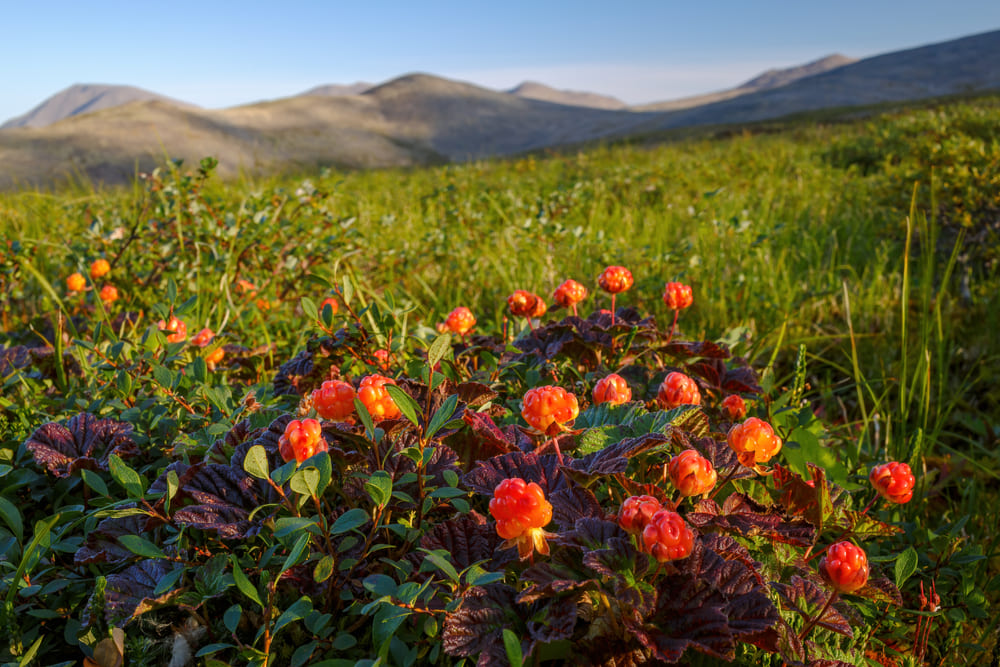The tundra biome is an ecosystem found throughout the northern hemisphere and is characterized by harsh environments and a short growing season. It is home to a variety of plant life, from low shrubs and grasses to lichens and mosses.
Understanding the basic requirements for tundra plant life is essential to preserving this unique and fragile ecosystem.
The Tundra Biome: An Overview

What is the Tundra Biome?
The tundra biome is a vast expanse of land with low temperatures and low precipitation that is unsuitable for tree growth.
Instead, the tundra is dominated by small shrubs, grasses, mosses, and lichens that are highly adapted to the harsh climate of the region.
What Makes the Tundra Biome a Unique Ecosystem?
The tundra biome is a unique ecosystem characterized by its cold, harsh climate and short growing season.
Despite the challenging conditions, it is home to a variety of plant life that has adapted to survive in the harsh environment.
What are the Types of Tundra Plants?
The types of tundra plants vary, including shrubs, mosses, lichens, sedges, grasses, and flowering plants.
These plants grow close to the ground to protect themselves from the cold temperatures and wind that characterize the region.
Tundra Plants Need: Essential Elements for Survival
How Do Tundra Plants Survive in the Harsh Arctic Environment?
Tundra plants have evolved to survive in the harsh Arctic environment by adapting to the short growing season and cold temperatures.
They have also developed other adaptations, such as low growth habits, permafrost root systems, and evergreen leaves.
What are Some Common Tundra Plants?
Common tundra plants include bearberry, Arctic willow, dwarf shrubs, and purple mountain saxifrage.
These plant species are native to the tundra region and have adapted to survive in the harsh environment.
Which Plants Grow in the Arctic Tundra Region?
Plants that grow in the Arctic tundra region typically have short growing seasons and are adapted to the cold temperatures and harsh conditions.
Examples of these plants include tundra rose, bearberry, lichens, and mosses.
The Role of Climate on Tundra Plant Growth
How Does Climate Affect Tundra Plant Life?
Climate significantly affects tundra plant life, as the cold temperatures and low precipitation in the region make it challenging for plants to grow.
Plants in the tundra biome have adapted to survive in the challenging environment.
What is the Growing Season for Tundra Plants?
The growing season for tundra plants is short, typically lasting only a few months during the summer. During this time, plants must absorb as much sunlight as possible to store energy for the long winter months ahead.
What are the Risks for Tundra Plants in Extreme Weather Conditions?
Tundra plants face many risks from extreme weather conditions, including frost damage, wind damage, and dehydration.
These risks make it challenging for plants to survive in the tundra biome, and only the most resilient and adaptive species can thrive.
Tundra Plant Adaptations: How Plants Cope with the Tundra Landscape
What is the Role of Permafrost in Arctic Tundra Plant Life?
Permafrost, a layer of soil that remains frozen throughout the year, plays an essential role in Arctic tundra plant life. It provides a stable environment for plant roots and helps regulate the moisture content of the soil.
What are the Root Systems of Tundra Plants?
Tundra plants have a permafrost root system that allows them to absorb nutrients and water from the frozen soil. These root systems also help anchor the plants to prevent wind damage.
How Do Low Shrubs Survive in Tundra Landscapes?
Low shrubs are one of the most common types of tundra plants. They survive in tundra landscapes by growing close to the ground to protect themselves from the cold temperatures and wind.
What are Some Common Tundra Plant Adaptations?
Common tundra plant adaptations include low growth habits, evergreen leaves, permafrost root systems, and the ability to absorb and store as much water and nutrients as possible during the short growing season.
Tundra Plants in Detail: Popular Species in the Arctic Region
What is Bearberry and How Does it Affect the Tundra Ecosystem?
Bearberry (Arctostaphylos uva-ursi) is a low-growing shrub found throughout the tundra biome. This plant is essential to the tundra ecosystem as it provides food and shelter for a variety of animal species.
It also plays an important role in stabilizing the soil and preventing erosion.
What is the Tundra Rose and Where Does it Grow?
The tundra rose (Rosa acicularis) is a low-growing shrub that is found in the Arctic tundra region. This plant produces small, fragrant flowers in the summer, providing a food source for pollinators such as bees and butterflies.
How Do Dwarf Shrubs Survive in the Tundra?
Dwarf shrubs survive in the tundra biome by growing close to the ground and developing permafrost root systems that allow them to access the nutrients and water they need to survive in the harsh environment.
What is the Purple Mountain Saxifrage and How Does it Survive in the Arctic Tundra?
The purple mountain saxifrage (Saxifraga oppositifolia) is a perennial plant that grows in rocky areas of the Arctic tundra.
This plant has adapted to survive in the harsh environment by storing nutrients in its roots and producing small, fragrant flowers that attract pollinators.
Conclusion
Tundra plants need specific adaptations to survive in their challenging environment. It is essential to preserve and protect the tundra biome to ensure the survival of these unique and fragile plant species.
With proper research and care, tundra plants can thrive, providing a home for a variety of animal life and contributing to the biodiversity of our planet.
